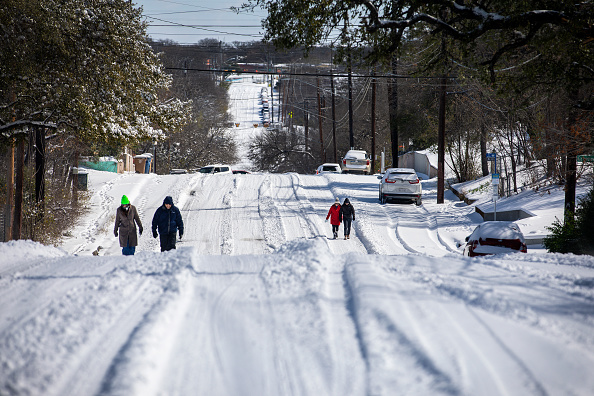Inflation has become a watchword for Republicans – and one powerful Democrat – bent on maligning President Joe Biden’s economic agenda.
Inflation is undoubtedly a bonafide problem, even if many economists believe it will ease in 2022. But one of the factors driving up prices is hardly Biden’s fault.
According to a report in The Wall Street Journal, “wild weather” – including “fire, freezes, flood, drought, hurricanes and some of the hottest weather ever” – “wreaked havoc on markets for raw materials, lifting prices for everything from electricity and heat to houses and breakfast cereal.”
“It all started in February when Texas froze over,” notes The Journal. The unseasonable February weather drove up demand for natural gas. Worse, the region’s key industries – including energy companies and chemical makers – were not adequately weatherproofed. As a result, production of home heating resources and “basic materials like PVC pipe and paint resins” plummeted, causing prices to rise.
Droughts also imperiled important resources, including Brazil’s corn crop and California’s hydropower. A freeze in Brazil also devastated the country’s coffee production and the Paraná River in South America – which connects several countries and serves as an important global trading route – got so low that ships could not use it in the Spring.
In June, record setting temperatures – particularly in the Pacific Northwest – caused Americans to rely more than ever on air conditioners, which caused electricity prices to rise. Meanwhile, wildfires and a flood in British Columbia helped drive wood prices to historic highs. And dry conditions in Canada and the U.S. caused a massive shortfall in oat and wheat. The Journal reports:
More than 1.2 million acres planted with spring wheat were never harvested and U.S. production fell 44% this year, according to U.S. Agriculture Department data. A bushel of the soft-red spring wheat favored by bakers and pizza makers doubled, rising to its highest price on the Minneapolis Grain Exchange since the 2008 planting season.
In addition, flooding impacted tin makers in China and copper producers in Germany.
Then came hurricane season in the U.S. More from the Journal:
August brought Hurricane Ida slamming into the Louisiana coast, the headliner of the third most active Atlantic storm season on record. Nearly all of the Gulf of Mexico’s natural gas output was knocked offline, which meant higher prices not just for electricity and gas for heat and cooking, but also for fertilizer, cement, steel and plastics, all of which can require a lot of gas to produce. Chemical makers along the coast, which were already struggling to meet demand, were hammered.
Ironically, an unseasonably warm autumn and early winter has caused Americans to use less gas, oil, and electricity to heat their homes, giving the industry time to replenish its depleted stock. But scientists believe extreme weather will only get worse.
“As long as we are emitting greenhouse gases at a historically unprecedented rate, we should expect this change to continue,” warned Stephanie Herring, a climate scientist at the National Oceanic and Atmospheric Administration, in a Washington Post interview.



